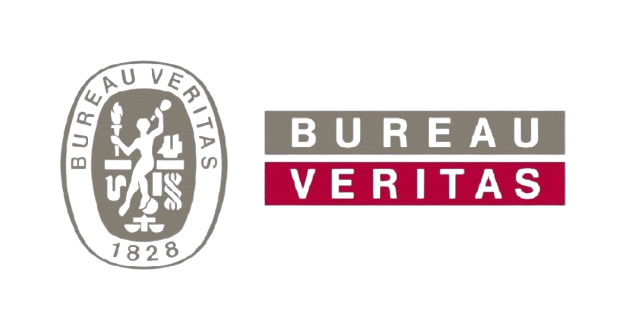Back to the blog
Market-based vs. Location-based Emissions Accounting
Jaume Fontal
CPTO & Co-Founder
In recent years, businesses and organizations have become more aware of the need to track and reduce their carbon emissions. However, the process of emissions accounting can be complex, with different methods available to measure and report emissions. Market-based and location-based emissions accounting are two distinct approaches used to calculate and report greenhouse gas (GHG) emissions. Understanding the differences between these methods is crucial for organizations aiming to meet sustainability targets and comply with regulations.
In this article, we’ll break down what market-based and location-based emissions accounting mean, how they differ, and why it’s important for businesses to choose the right method.
What is Market-based Emissions Accounting?
Market-based emissions accounting focuses on the emissions associated with the energy contracts a company or organization purchases. This method considers the specific electricity sources that a company has chosen to procure, such as renewable energy, coal, or natural gas. It uses data from these energy contracts to estimate the carbon footprint of the energy used by the organization.
Key features of Market-based Emissions Accounting
- Energy procurement focus: accounts for emissions based on the specific energy contracts or renewable energy certificates (RECs) a company has chosen.
- Voluntary energy choices: this method reflects the voluntary decisions of a company to invest in cleaner, low-carbon energy sources.
- Renewable energy impact: the choice to purchase green energy through RECs or power purchase agreements (PPAs) can reduce the emissions reported in a company’s carbon footprint.
Why is Market-based Accounting important?
Market-based accounting is particularly important for companies seeking to:
- Promote sustainability goals by prioritizing the use of renewable energy and making conscious energy choices.
- Lower their carbon footprint by investing in clean energy sources.
- Enhance transparency in sustainability reporting by showing the emissions associated with specific energy choices.
For further insights into how businesses can reduce their carbon emissions, consider exploring our article: Green living in the workplace: Corporate sustainability strategies.
What is Location-based Emissions Accounting?
Location-based emissions accounting, on the other hand, focuses on the emissions intensity of the electricity grid in the specific geographic location where an organization operates. Instead of looking at the energy contracts purchased by the company, this method calculates emissions based on the average emissions intensity of the grid that supplies the energy to a given location.
Key Features of Location-based Emissions Accounting
- Grid emissions focus: accounts for the average emissions intensity of electricity generated in a region, irrespective of the energy contracts purchased by the organization.
- Geographical factors: the emissions factor is determined by the mix of energy sources used in the local grid, including coal, natural gas, and renewables.
- No voluntary choices: unlike market-based accounting, location-based accounting does not consider whether a company has purchased renewable energy, as it only looks at the grid’s overall emissions profile.
Why is Location-based Accounting important?
Location-based accounting is important for companies that:
- Want to assess the environmental impact of their operations in a specific location, taking into account the energy grid’s emissions profile.
- Need to align with regulations: some national or regional regulatory frameworks require emissions accounting based on location-based emissions intensity.
- Understand the regional variability in energy supply and the environmental impact of electricity generation.
If you want to understand how location-based emissions accounting can affect sustainability reporting, we recommend reading our guide: Get to know your carbon footprint data in real time without technical knowledge.
Why do companies need to choose between these methods?
Choosing between market-based and location-based accounting depends on several factors, including:
- Corporate goals: a company with strong sustainability goals may prefer market-based accounting to reflect its commitment to renewable energy and reducing emissions.
- Geographic operations: a company with global operations might use both methods to gain a clearer understanding of their emissions impact across different regions.
- Regulatory requirements: certain jurisdictions may require location-based accounting to comply with local carbon reporting standards.
Both methods provide valuable insights into a company’s environmental impact, but each method tells a different story about how energy is consumed and what its associated emissions are. To meet global sustainability goals, many companies choose to use both methods in tandem to get a more holistic view of their carbon footprint.
Which method should companies choose?
Choosing the right method for emissions accounting is essential for businesses committed to sustainability. Whether through market-based accounting, which reflects voluntary energy decisions, or location-based accounting, which focuses on regional grid emissions, understanding the differences and choosing the appropriate method helps companies manage their carbon footprint more effectively.
For companies aiming to improve their sustainability efforts, it’s crucial to stay informed about emerging reporting standards and best practices.
FAQs
What is the main difference between market-based and location-based emissions accounting?
Market-based accounting looks at the emissions associated with the energy contracts a company purchases, while location-based accounting calculates emissions based on the local grid's energy mix.
Why would a company use both market-based and location-based accounting?
Using both methods allows a company to understand its carbon footprint from both its energy procurement decisions and the emissions intensity of the regional electricity grid, providing a more comprehensive emissions profile.
Which method is better for regulatory compliance?
Location-based accounting is often required for regulatory compliance, as it reflects the actual emissions intensity of the electricity grid in the region. However, market-based accounting can be useful for companies aiming to meet voluntary sustainability targets.
Jaume Fontal
CPTO & Co-Founder
About the author
Jaume Fontal is a technology professional who currently serves as CPTO (Chief Product and Technology Officer) at Manglai, a company he co-founded in 2023. Before embarking on this project, he gained experience as Director of Technology and Product at Colvin and worked for over a decade at Softonic. At Manglai, he develops artificial intelligence-based solutions to help companies measure and reduce their carbon footprint.
Content
Companies that already trust manglai














The Sustainable Apparel Coalition: Impact on the fashion industry
Explore how the coalition promotes ethical sourcing and sustainability in fashion.
23 April, 2025
Fugitive emissions: Identifying and managing leaks
Understand fugitive emissions, their impact, and mitigation strategies for businesses.
16 April, 2025
Scope 4 emissions: The next big thing in sustainability?
Understand how Scope 4 emissions factor into business sustainability and reporting.
02 April, 2025
Guiding businesses towards net-zero emissions through AI-driven solutions.
© 2025 Manglai. All rights reserved
Política de Privacidad


